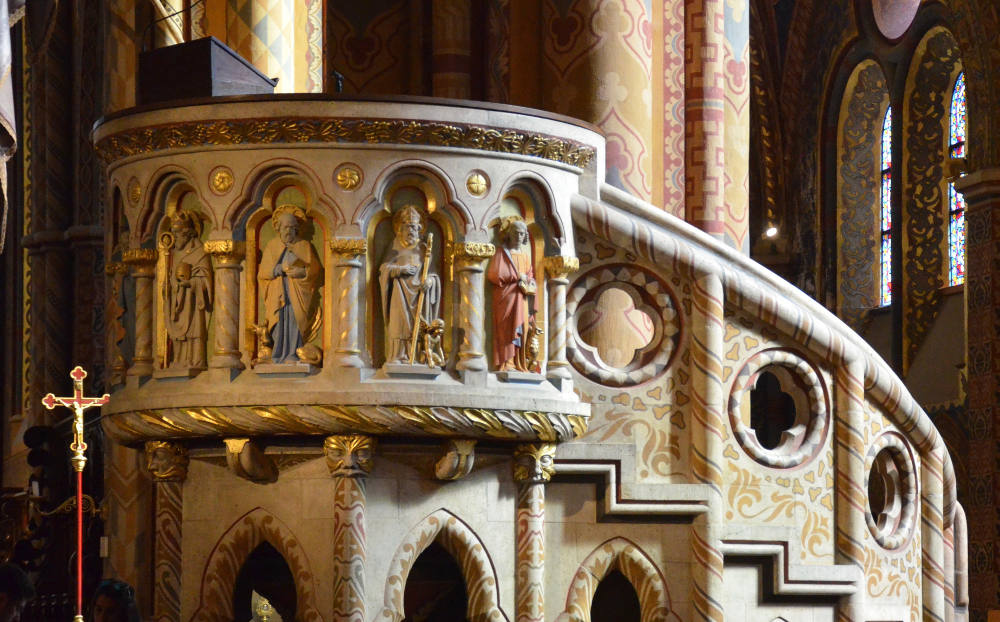
The Pulpit, The Matthias Church (1874-1896) designed by by Frigyes Schulek (1841-1919), who restored the church. Budapest, Hungary. Click on images to enlarge them.
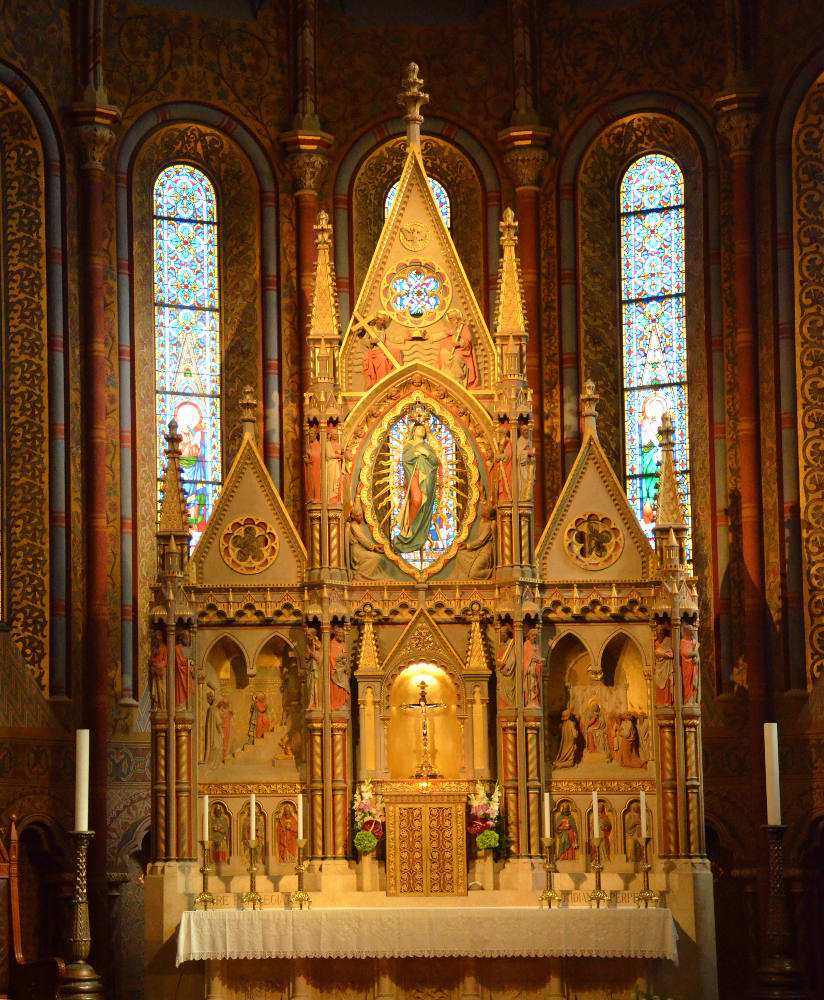
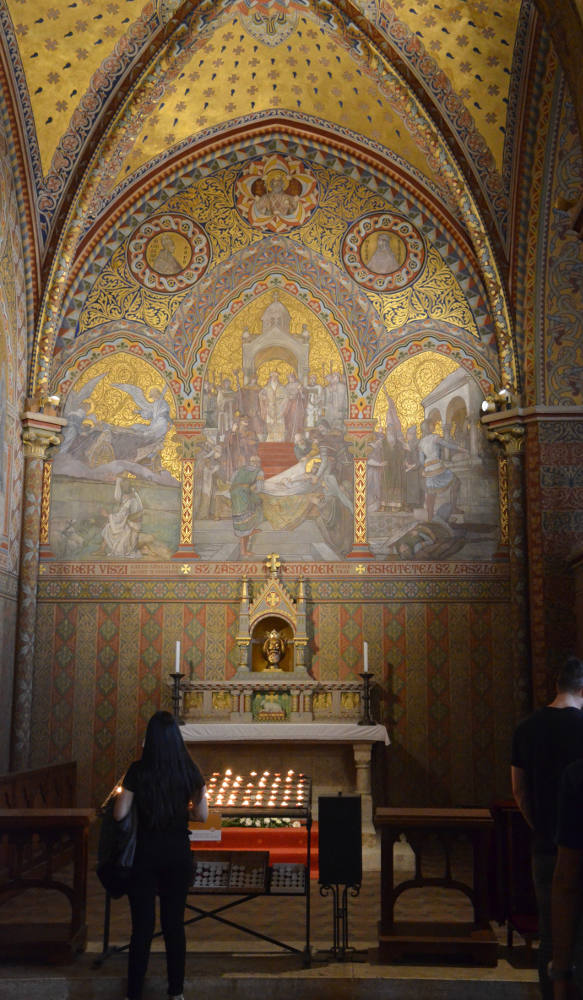
The main altar compared to one of the chapels.
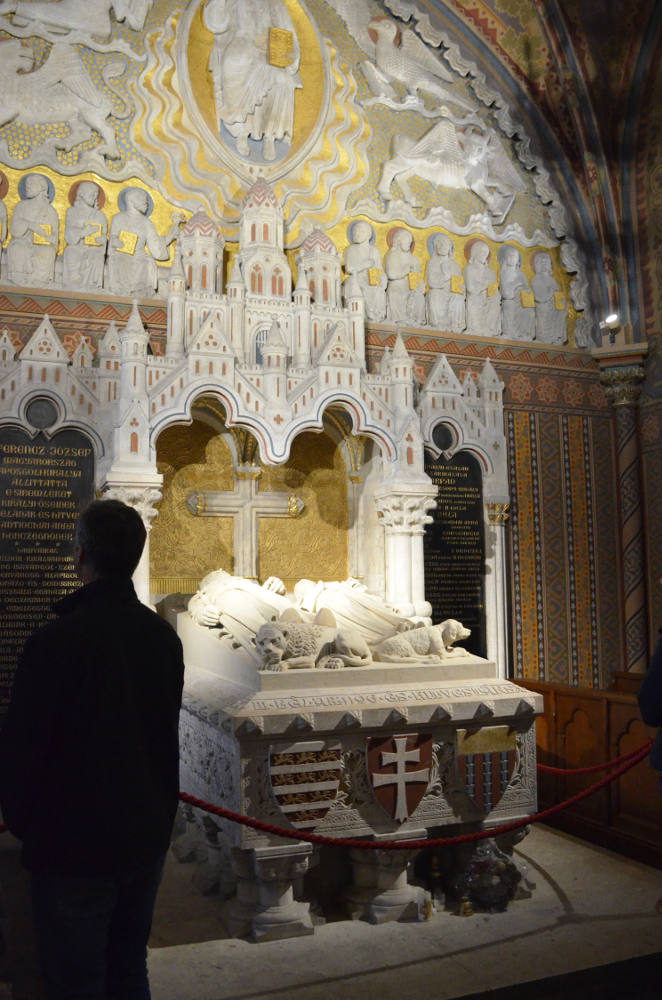
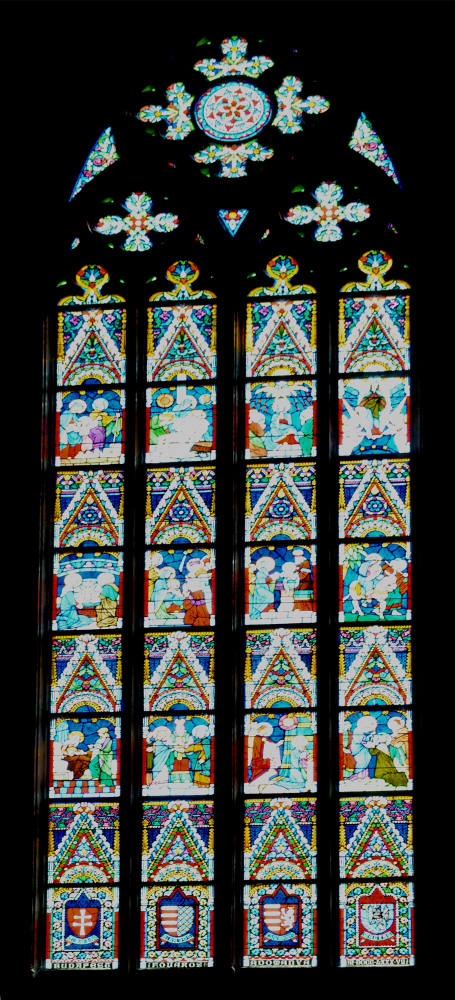
Left: The Tomb of King Béla III and his wife, which was moved to this side chapel in 1896. Frigyes Schulek designed the tomb and Ferenc Mikula created the sculpture. The twelve apostles are lined up in a row above the tomb. Right: One of the church’s stained-glass windows.
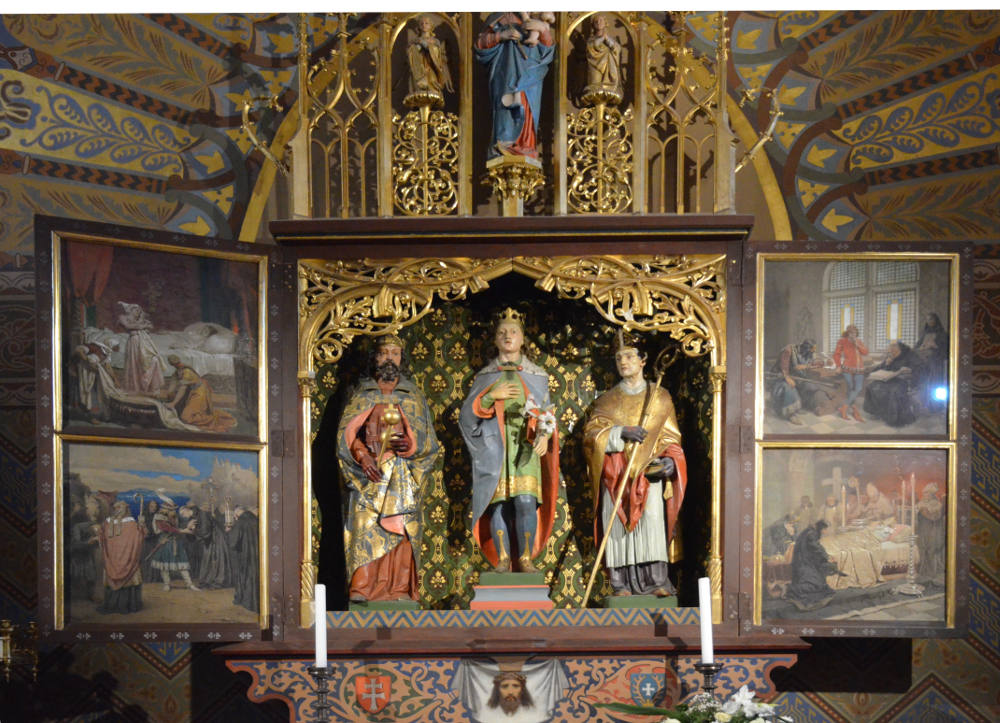
The three statues in the Saint Emeric Chapel depict the King St. Stephen, St. Emeric of Hungary (who holds a lily), and Gerard Bishop of Csanárd. Mihály Zichy painted the scenes from the life of St. Emeric.
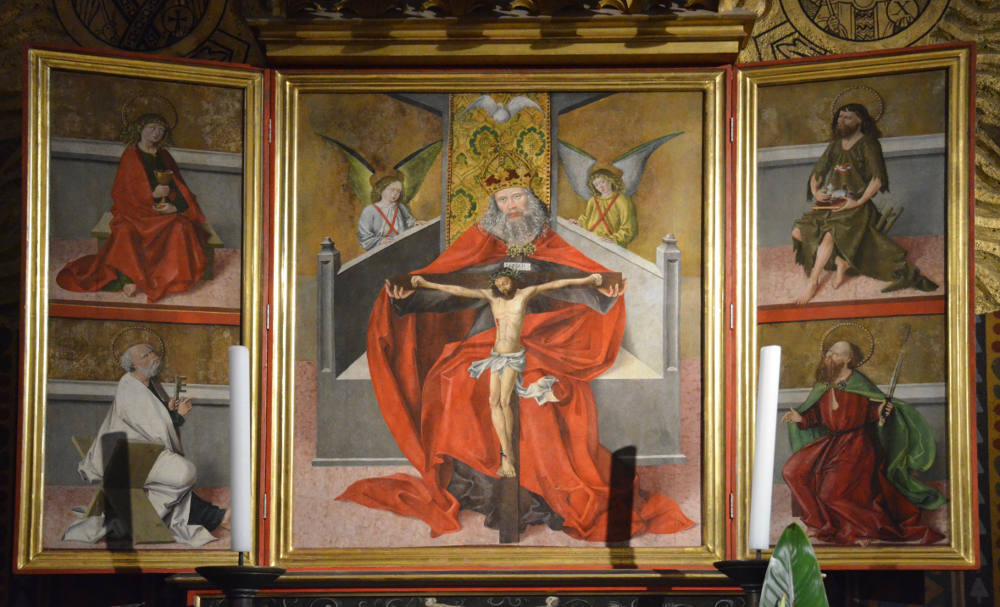
A winged altarpiece at whose center we see God the father holding the crucified Christ. All five panels embody an eclectic mixture of revival styles: the four panels on the wings of the altarpiece use the plateau compositions of Northern Renaissance paintings like Van Eyck and Memling, and center panel seems to combine Byzantine subject with later style.
Photographs 2019 by George P. Landow. Captions by Landow and Jacqueline Banerjee. [You may use these images without prior permission for any scholarly or educational purpose as long as you (1) credit the photographer and (2) link your document to this URL in a web document or cite the Victorian Web in a print one.]
Related Material
- The Exterior of St.Matthias
- The Interior of St.Matthias (I)
- Schulek's Fisherman's Bastion (1895-1903)
- Schulek's Fisherman's Bastion (1895-1903)
- Schulek's Fisherman's Bastion (1895-1903)
Sources
Sisa, Jozsef. "Neo-Gothic Architecture and Restoration of Historic Buildings in Central Europe: Friedrich Schmidt and His School." The Journal of the Society of Architectural Historians. Vol. 61, no. 2 (June 2002): 170-187.
Last modified 13 October 2019